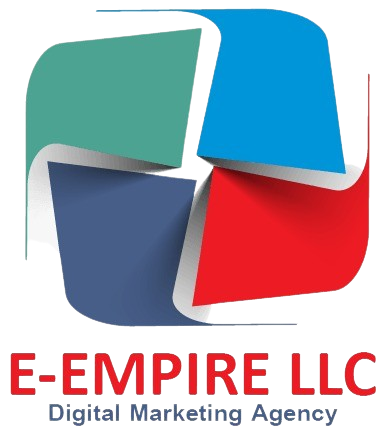Inbound marketing is one of the most powerful strategies for attracting customers by providing valuable content. But how can audience segmentation enhance your inbound marketing efforts? This is what we are going to discuss in this article.
In this crowded digital marketplace, the competition among businesses is increasing day by day. However, despite this, reaching and engaging with your targeted audience is now easier than ever before. Audience segmentation is one of those strategy that helps business to reach your targetted audience and convert them into loyal customers.
Before delving deeper, let’s first understand the concepts of “inbound marketing” and “audience segmentation.”
Table of Contents
ToggleWhat is inbound marketing?
Inbound marketing is a digital marketing strategy that focuses on attracting customers through valuable content and experiences that resonate with their audience. Unlike traditional outbound marketing that interrupts consumers with messages they may not want, inbound marketing helps to provide solutions and information when and where it’s most relevant to the audience. It prioritizes content and information sharing instead of just relying on ads.
What Is Audience Segmentation?
Audience segmentation is the process of dividing a broad target audience into smaller, more defined groups based on specific characteristics. These groups, known as audience segments, allow businesses to tailor their marketing campaigns and messages to these distinct segments, providing a more personalized and relevant experience for each group.
This strategic approach can be used by businesses to optimize their marketing efforts, ensuring that messages resonate with each audience segment and ultimately enhancing engagement and campaign effectiveness.
These subgroups can be categorized based on various factors, including demographics like geographic location, gender identity, or age. Behavior-based segmentation considers factors such as purchasing history. These groups can also be based on audience personality type values, attitudes, and beliefs.
Impact Of Audience Segmentation On Inbound Marketing Efforts
Now that we have understood both essential inbound marketing strategies and audience segmentation. Let’s discuss how audience segmentation can enhance your inbound marketing efforts.
Personalized
Audience segmentation helps to create personalized content for different groups. By understanding each segment’s unique needs, preferences, and behaviors, businesses can tailor their messages to resonate with their audience more effectively.
For example, a sports apparel company might create separate campaigns for fitness enthusiasts and casual athletes, offering personalized content and product recommendations based on their interests. This personalization leads to higher relevance and engagement with the audience. Customers feel understood and valued when they receive content that speaks directly to their needs, which builds stronger connections and brand loyalty.
Precise Targeting
Business can precise their targetted marketing effort with audience segmentation. Audience segmentation helps to reach the right audience with the right message. Instead of a broad approach, businesses can direct their marketing efforts towards segments more likely to convert their customers.
For instance, a software company offering enterprise and small business solutions can create separate campaigns for each segment. By targeting decision-makers in larger enterprises with content focused on scalability and advanced features, as well as small business owners with content emphasizing affordability and ease of use, the company can increase the effectiveness of its marketing efforts. This targeted approach improves campaigns’ efficiency and maximizes the impact of marketing spend.
Improve Marketing ROI
Audience segmentation can improve Marketing ROI( Return on investment). When marketing efforts are directed toward well-defined groups of people, precise and targeted to the most relevant segments, businesses can achieve a better return on investment (ROI). By focusing resources on segments that have shown interest or potential, businesses can optimize their marketing budgets and drive higher conversions.
For instance, an e-commerce fashion retailer might identify segments like “luxury shoppers,” “budget-conscious buyers,” and “trend-focused millennials.” This allows them to tailor advertising campaigns, allocating budget to platforms favored by each group. Efficient targeting ensures increased sales and revenue generation, maximizing the impact of marketing efforts.
Improved User Experience
Audience segmentation contributes to an enhanced user experience in your inbound marketing effort by providing content that resonates with the interests and needs of each segment.
When users receive tailored content that speaks to their specific concerns or desires, This includes suggesting relevant content and creating personalized campaigns that align with each segment. They are more likely to engage with the brand, leading to improved satisfaction and loyalty.
More Accurate Insights:
In your inbound marketing efforts, audience segmentation gives businesses more accurate insights into customer behavior, needs, and preferences. By analyzing data from specific segments, businesses gain a deeper understanding of what drives each group. This insight allows for creating targeted strategies and offerings that resonate with each segment, ultimately leading to higher engagement and conversion rates.
Better insight from audience segmentation helps businesses to allocate their marketing budget more effectively. By analyzing marketing campaigns, businesses can identify which segments are the most targeted and responsive. Focusing resources on these high-potential segments maximizes the impact of marketing efforts and ensures efficient spending.
Steps To Implement Audience Segmentation In Your Inbound Marketing Strategy
You need to follow these steps to effectively implement audience segmentation in your inbound marketing efforts to get substantial results.
Data Collection Through Audience Research
Start by conducting thorough audience research using various methods such as surveys, interviews, analytics, and social media insights. This research will help you identify key demographics, behaviors, preferences, pain points, and goals of your target audience. Understanding these factors allows you to segment the audience into smaller, more manageable groups for personalized content strategies.
Segmentation
Analyze data for the segmentation process. Identifying common characteristics and behaviors within your audience. This includes demographics such as age, location, and gender, as well as psychographics like lifestyle and values. These factors allow you to group your audience into smaller segments for more targeted and relevant content strategies.
Develop Comprehensive Buyers Persona
Create detailed buyer personas for each audience segment, outlining their unique characteristics, needs, goals, and preferred communication channels. By understanding the specifics of each persona, businesses gain a deeper understanding of their audience’s needs and preferences. This helps create targeted and relevant content strategies that resonate with each segment. ultimately leading to enhanced engagement and successful inbound marketing efforts.
Personalize Content Creation
Utilize the collected segmented audience data to create tailored content and messages aligned with each group’s interests and needs. This approach involves creating different blog posts, emails, social media messages, eBooks, or webinars for individual segments that provide information and solutions to their unique needs and challenges.
Marketing Automation
Use marketing automation tools to deliver targeted content and offers that resonate with each audience segment’s behaviors and preferences. This strategic approach ensures content is relevant and timely, increasing engagement and conversion rates.
Continuously Testing And Optimization:
Businesses set and forget their marketing campaigns after launch. However, you have to test and optimize your inbound marketing efforts regularly. Analyze the performance of segmented content regularly and adjust strategies accordingly for improvements. This step will help improve and optimize your inbound marketing campaign, providing better understanding and engagement with your audience.
Final Thoughts
It’s evident now that audience segmentation can enhance your inbound marketing efforts by dividing your target audience into subgroups based on characteristics, needs, and behaviors. This strategy helps you deliver personalized messages to the right people at the right time, increasing ROI and building customer loyalty.
However, audience segmentation is an ongoing process requiring careful attention to analyze, refine, and optimize inbound marketing efforts regularly. By following these steps diligently, businesses can continuously improve their strategies, resulting in increased revenue and leads.
FAQs
Q: What is audience segmentation, and how does it help inbound marketing?
Audience segmentation is the process of dividing a broad target audience into smaller groups based on specific characteristics, enhancing inbound marketing by delivering personalized messages to each group.
Q: What are some examples of audience segments for inbound marketing?
You can segment your audience based on demographics, interests, buying stage, or even past behavior. The possibilities are endless! The key is to choose relevant segments to your product or service and allow you to personalize your inbound marketing approach.
Q: How can segmentation improve revenue in inbound marketing?
Segmentation improves revenue in inbound marketing by targeting high-potential segments more effectively, optimizing marketing spend, and increasing conversions.
Q: How can we collect data for audience segmentation?
Data for audience segmentation can be collected through Customer Relationship Management (CRM) Systems through surveys, interviews, analytics tools, social media insights, and email marketing.

